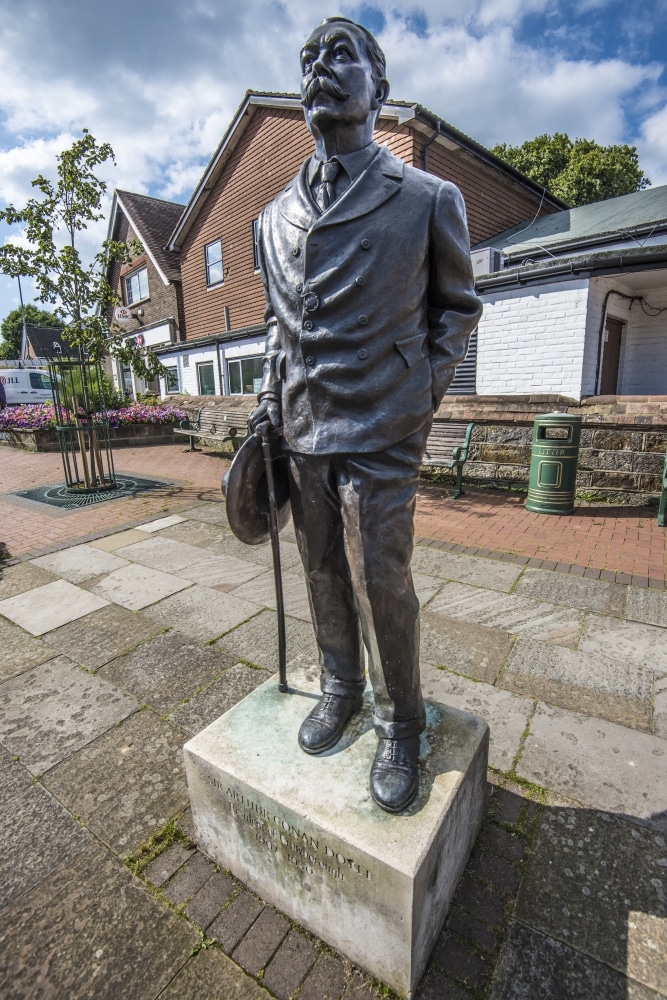One of the things I enjoy most about the spookiest season of the year is the excuse that it gives all of us, students and parents alike, to reconnect with one of the finest genres in English Literature: Classic horror fiction.
Sometimes young people can be reluctant to engage with ‘the classics’ but, as Halloween is almost upon us, being told ‘this probably isn’t for you; it’s too scary’ is a sure-fire way to gain the attention of most teenagers.
Here are some prime examples of the most terrifying moments in literature…
The Castle of Otranto by Horace Walpole
This is where it all started. The Castle of Otranto is ground zero for the Gothic genre and has left its influence down the centuries in every Gothic horror tale written or filmed since: A gloomy castle, a terrified damsel in distress and mysterious supernatural powers are all present and correct.
Frankenstein by Mary Shelley
Probably the most widely read and highly regarded piece of Gothic fiction ever, but it isn’t until you read the novel that you appreciate how different Mary Shelley’s creation is from the lumbering green monster (with the obligatory bolt through the neck) of popular myth. Like all the best classic horror fiction, Frankenstein leaves plenty of unsettling questions for the reader alongside the familiar thrills and chills.
We Have Always Lived in the Castle by Shirley Jackson
Maybe ghosts and monsters and things that go bump in the night aren’t your style? Not all horror fiction, however, has to rely on the supernatural for its chilling power: Shirley Jackson creates a perfectly horrifying tale without it, about a dysfunctional family that is isolated and growing ever stranger in the aftermath of a tragedy.
Collected Short Stories by Edgar Allen Poe
If you’re looking for something a bit more bite-size in your terrifying tales, then you could do no better than the master of the macabre short story. Poe’s short fiction will give even the hardiest reader something terrifying to enjoy while hiding from the trick-or-treaters. The theme of being buried alive is something he returns to many times in stories such as The Cask of Amontillado, and animal lovers might want to beware of reading The Black Cat. You’ll never look at your feline companion in quite the same way afterwards. Arguably his finest short story, The Fall of the House of Usher, contains enough passion, dread and death to make even the most hardened Stephen King fan need to have a bit of a lie down after reading.
The Hound of the Baskervilles by Sir Arthur Conan Doyle
A supernatural hell-hound, an ancient family curse, a final confrontation on a desolate fog-shrouded moor: All of the ingredients of a Gothic classic are present and correct.
The Call of Cthulhu and Other Weird Stories by H P Lovecraft
Lovecraft is the only writer to challenge Poe’s supremacy in classic horror short stories. Any horror fan knows that the things that are hinted at and live forever in the shadows are more terrifying than the monsters we see in plain sight.
Wuthering Heights by Emily Brontë
There is probably no book in existence with such a gap between what people think it’s about and what is actually contained in the pages. Wuthering Heights is, at heart, a dark and brooding tale of Gothic horror in which ghosts assail the unwary and deeds of brooding violence are wrought by savage anti-heroes. If you’ve never read it because you think it’s a soppy love story, then give it a go.
Dracula by Bram Stoker
Just like Frankenstein and Wuthering Heights, there’s a big difference between what you think you know about Dracula and what the book actually contains. Told entirely as a series of letters and journal entries, this introduced the vampire subgenre to horror fiction singlehandedly, and the book, like the Count, remains powerful and compelling to this day.
The Silent Companions by Laura Purcell
The most modern book in this list was published in 2018. It tells the story of Elsie, a recently widowed Victorian woman sent to live in her husband’s crumbling manor after his death whilst she is expecting his child. Although written in the modern day, it perfectly captures the Gothic mood of a Victorian chiller. The silent companions (lifelike wood figures whose eyes seem to move) are a uniquely haunting.creation.








